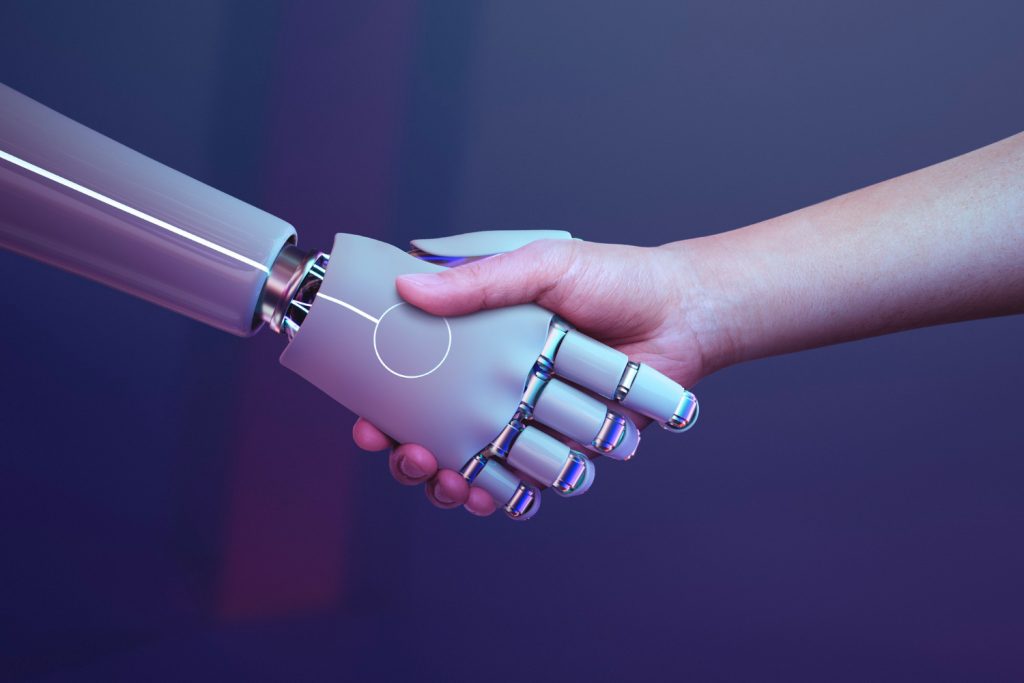In the dynamic world of technology and user-centric design, the United States is undeniably a trailblazer. As we gaze ahead into the future, the domain of UI/UX (User Interface and User Experience) design in the USA is poised for an exhilarating transformation. This blog embarks on a captivating journey through the evolving landscape of UI/UX design in the United States, unveiling the significant trends and developments that promise to redefine how we interact with digital interfaces. From the fusion of AI and machine learning to the heightened emphasis on accessibility and ethical design, fasten your seatbelts as we explore the fascinating roadmap that will shape the UI/UX discipline in the coming years. The future is here, and it’s awash with innovation, creativity, and user-centered excellence.
Importance of user interface and user experience
Certainly, here’s information on the importance of user interface (UI) and user experience (UX) design:
User Interface (UI) and User Experience (UX) are two integral components of digital product design, playing a crucial role in shaping how users interact with technology. In the USA, where the tech industry thrives, the importance of UI and UX is more significant than ever. Here’s why:
Reduced Bounce Rates:
In an era where attention spans are short, an intuitive UI and a smooth UX can keep users engaged. A confusing or frustrating interface can lead to high bounce rates, where users quickly abandon a site or app. UI/UX design helps reduce bounce rates by making interactions enjoyable and productive.Increased Conversions:
For businesses, conversions, such as signing up, making a purchase, or subscribing, are essential. Effective UI/UX design can streamline the conversion process. For instance, an e-commerce website with a clear and straightforward checkout process is more likely to convert visitors into customers.Brand Loyalty:
UI and UX design significantly influence brand perception. A visually appealing and user-friendly interface sends a message of professionalism and trustworthiness. Consistent, positive experiences across various touchpoints build brand loyalty and reputation.Accessibility and Inclusivity:
Designing with accessibility in mind is not just about compliance with regulations; it’s about creating a digital world that is inclusive to everyone, including those with disabilities. Proper UI/UX design ensures that content and interactions are accessible to a diverse audience, promoting inclusivity and social responsibility.Competitive Advantage:
In the USA’s competitive tech landscape, businesses that prioritize UI/UX design gain a significant edge. A well-designed product or service stands out from the competition and can become a key differentiator in attracting and retaining users.Data-Driven Improvements:
UI/UX design is not a one-time effort but an ongoing process. Designers collect user data and feedback to make continuous improvements. This data-driven approach leads to iterative enhancements, ensuring that the UI/UX remains aligned with user expectations and needs.
The importance of UI and UX in the USA lies in their ability to create enjoyable, efficient, and accessible digital experiences. Whether it’s a website, mobile app, or software product, investing in UI/UX design is an investment in user satisfaction, business success, and brand reputation.
The rise of AI and machine learning

Here are important points with more detailed information about the rise of AI and machine learning :
Enhanced User Personalization:
AI and machine learning algorithms have the capacity to collect and analyze vast amounts of user data. This enables designers to create highly personalized user experiences. For instance, recommendation engines in e-commerce apps can suggest products based on a user’s browsing and purchase history. Such personalization not only improves user satisfaction but also drives conversions and engagement.Chatbots for Seamless Interactions:
AI-driven chatbots are becoming commonplace in user interfaces. They offer real-time assistance, answer queries, and guide users through applications. By providing quick and efficient solutions, chatbots enhance user interactions and reduce friction in navigating digital platforms.Predictive Design for Intuitive Interfaces:
Machine learning can predict user actions and preferences. This means that interfaces can adapt in real time to meet user expectations. For instance, a weather app can anticipate a user’s preferred locations and provide weather updates accordingly. Predictive design leads to more intuitive and user-friendly interfaces.Data-Backed Decision Making:
Designers can use AI to analyze user behavior and feedback. This data-driven approach helps in making informed design decisions. By understanding how users engage with an application, designers can optimize layouts, content, and features to enhance the overall user experience.Ethical Considerations:
The increasing use of AI in design also brings ethical concerns. Designers must consider issues like user privacy, bias in algorithms, and the potential for addiction in AI-driven products. Ethical design will be a crucial aspect of future UI/UX design, ensuring technology benefits users without harm.
The integration of AI and machine learning is set to shape the future of UI/UX design in the USA, offering exciting opportunities to create highly personalized, efficient, and user-centric digital experiences.
The shift to voice and gesture interfaces
The shift to voice and gesture interfaces is ushering in a new era of user interaction that’s poised to redefine UI/UX design in the USA. This transformative trend is driven by advancements in speech recognition technology and the proliferation of voice-activated devices like smart speakers and virtual assistants. Users are increasingly relying on voice commands and hand gestures to control their digital experiences, from setting reminders on their smartphones to adjusting the thermostat at home. This shift is not just about convenience; it’s about providing users with a more natural and intuitive way to engage with technology.
Moreover, the growing adoption of voice and gesture interfaces is amplifying the importance of accessibility in UI/UX design. These interfaces are breaking down barriers for individuals with disabilities, enabling them to access and interact with digital content and services effortlessly. Designers are now challenged to create experiences that cater to a diverse range of users, including those with mobility impairments or visual or hearing impairments. As a result, the landscape of UI/UX design is evolving to prioritize inclusivity and accommodate the needs of a broader audience, aligning with legal requirements and ethical considerations for accessibility. In this dynamic landscape, UI/UX designers must not only master traditional design principles but also adapt to the unique challenges and opportunities presented by voice and gesture interfaces, ultimately shaping the future of user experiences in the USA.
The increasing focus on accessibility
The increasing focus on accessibility is a pivotal aspect of the evolving landscape of UI/UX design in the USA. Accessibility, in this context, refers to the practice of ensuring that digital products and interfaces can be used effectively by individuals with disabilities, including those with visual, auditory, motor, and cognitive impairments. In recent years, there has been a growing awareness and commitment to making digital experiences inclusive and equitable for all users.
Several factors are driving this heightened focus on accessibility. First and foremost, there are legal requirements, such as the Americans with Disabilities Act (ADA) and Section 508 of the Rehabilitation Act, which mandate that digital content and services must be accessible to individuals with disabilities. Failure to comply with these regulations can result in legal consequences, making accessibility a legal imperative for businesses and organizations.
Moreover, there is a broader recognition within the design community and among businesses that accessibility is not only a legal obligation but also a moral and ethical imperative. Designers are increasingly embracing the philosophy that good design is inherently inclusive, and they are actively working to remove barriers and provide alternative pathways for users who may face challenges when interacting with digital interfaces. This shift towards prioritizing accessibility is fostering a more empathetic and user-centric approach to UI/UX design, ultimately leading to more effective and equitable digital experiences for everyone. As a result, accessibility considerations are becoming an integral part of the UI/UX design process, ensuring that the future of design in the USA is one where no one is left behind in the digital realm.
The growing demand for ethical design

Here are five important points regarding the growing demand for ethical design, each with additional information:
User-Centered Ethical Design:
Ethical design places users at the forefront. It involves understanding user needs, values, and concerns, and designing digital products that respect these aspects. This approach ensures that products are not only functional but also align with users’ ethical expectations.Data Privacy and Transparency:
The ethical design emphasizes responsible data handling. Designers must be transparent about data collection, use, and storage, and provide users with control over their personal information. This can include clear privacy policies, easy-to-use consent forms, and robust data protection measures.Inclusivity and Accessibility:
Ethical design goes hand in hand with inclusivity. Digital products should be accessible to everyone, regardless of their abilities or disabilities. This involves creating interfaces that are easy to navigate, providing alternative content for various user needs, and adhering to accessibility standards.Fair Algorithms and AI:
As AI and machine learning play larger roles in digital products, ethical design requires fair and unbiased algorithms. Designers must identify and mitigate biases in AI systems to prevent discrimination, ensuring that technology benefits all users equally.Sustainability and Environmental Impact:
Ethical design is increasingly considering the environmental impact of digital products. This involves optimizing designs for energy efficiency, reducing data storage waste, and considering the carbon footprint of web services, contributing to a more sustainable digital landscape.
By integrating these principles into UI/UX design processes, companies can meet the growing demand for ethical design while creating products that are user-friendly, inclusive, and responsible.
The impact of emerging technologies
The impact of emerging technologies is profoundly reshaping the field of UI/UX design in the USA. Augmented and Virtual Reality (AR/VR) technologies are breaking new ground by introducing immersive, three-dimensional user experiences. From gaming and entertainment to healthcare and education, AR and VR are pushing the boundaries of design, demanding a fresh approach to creating intuitive and interactive interfaces.
Voice and gesture interfaces are becoming increasingly prevalent in everyday life, driven by the widespread adoption of voice-activated smart assistants and gesture-controlled devices. UI/UX designers are navigating the challenges of designing for natural language processing and intuitive gestures, ensuring that users can seamlessly interact with technology using voice commands and gestures. This shift towards hands-free interaction is influencing how designers approach user interfaces across various platforms, including mobile apps and websites.
Conclusion
In summary, the future of UI/UX design in the USA is poised for remarkable transformations driven by the integration of AI, the increasing emphasis on user experience, the advent of voice and gesture interfaces, the focus on accessibility, the demand for ethical design, and the impact of emerging technologies. These trends are redefining the role of UI/UX designers, challenging them to adapt and innovate in an ever-evolving technological landscape. By embracing these shifts and prioritizing user-centric, accessible, and ethical design practices, designers can play a pivotal role in shaping the future of digital interactions in the United States.
Read more:



